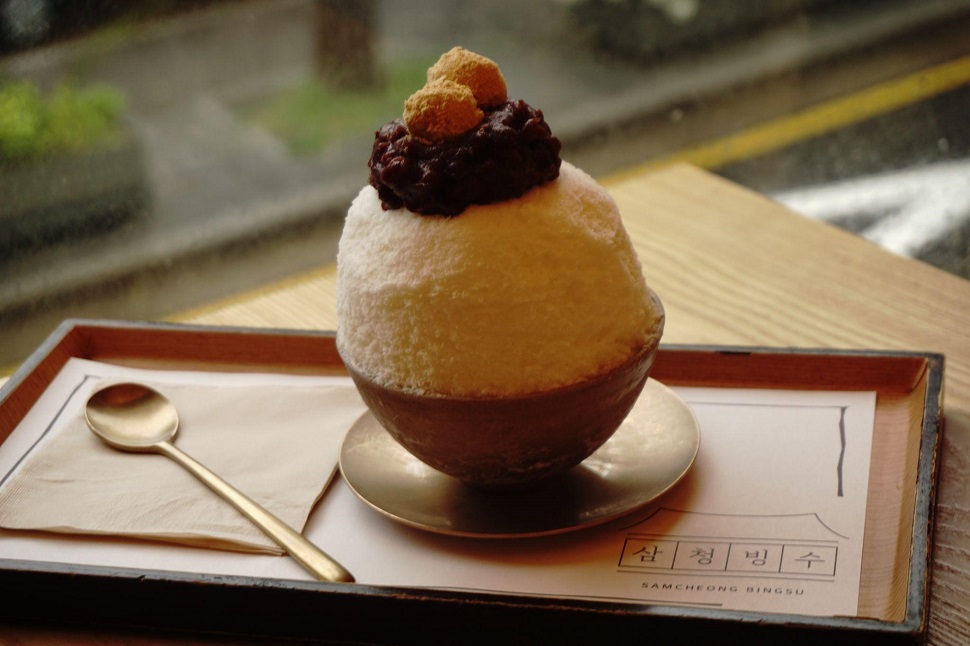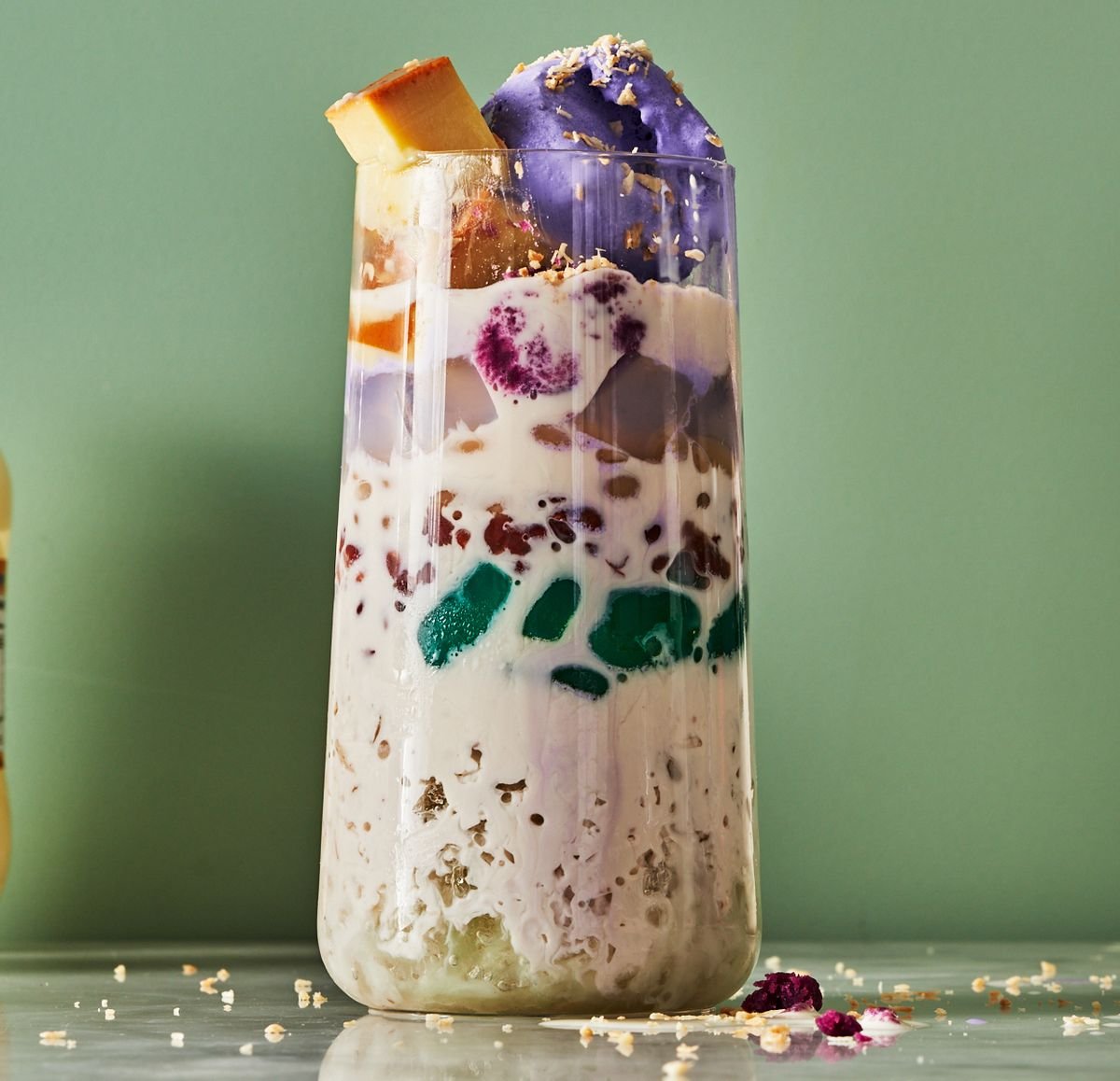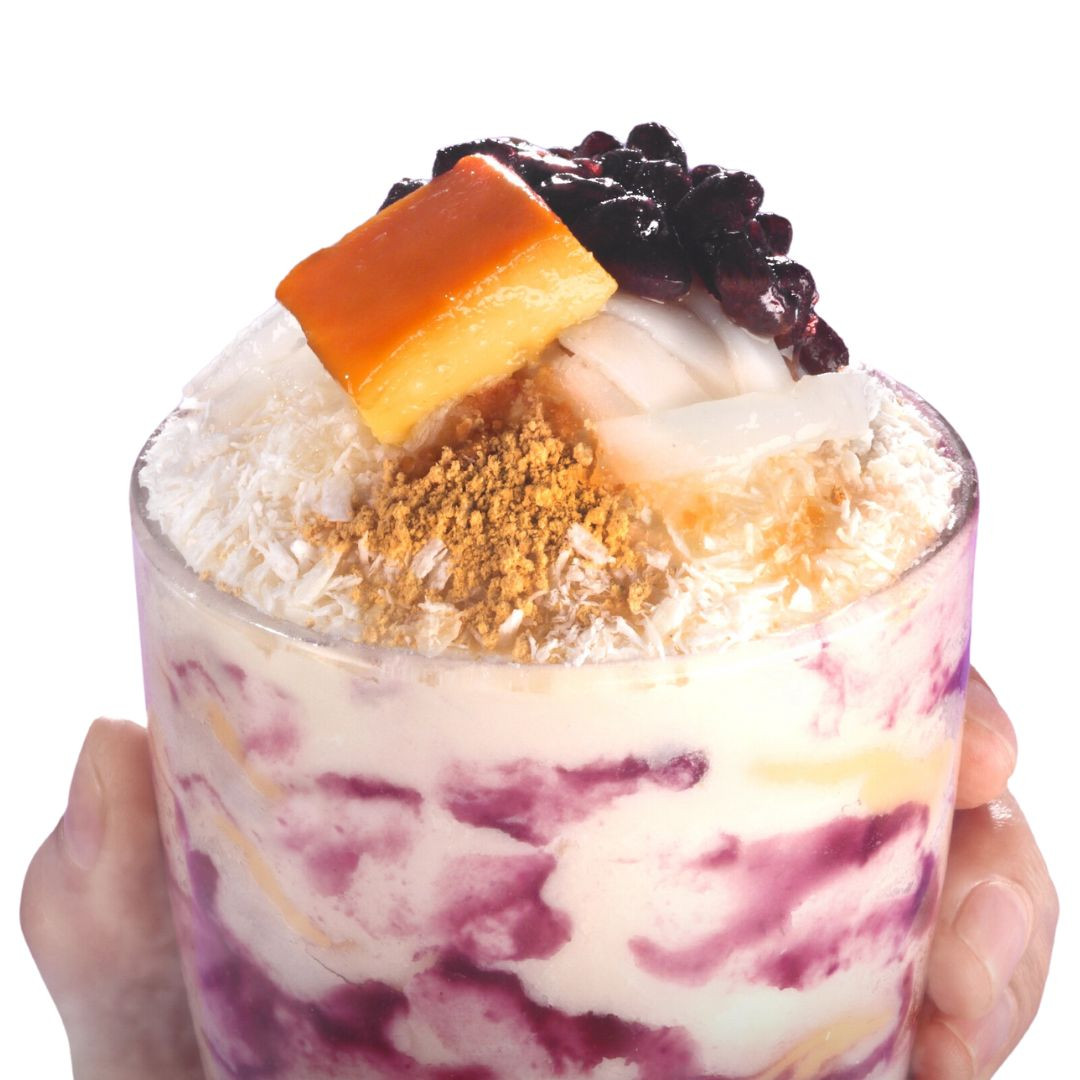[MISSION] Introducing the ‘Hallyu Mix’: A Fusion of Culinary Traditions of Korea’s ‘Bingsu’ and the Philippines’ ‘Halo-Halo’
2024-06-21From its humble beginnings in antiquity to its modern versions in the 21st century, shaved ice has been a beloved refreshing treat worldwide during summer. Different countries have unique versions of this summer staple including Korea and the Philippines. Korea has its bingsu while the Philippines boasts its halo-halo. In this article, we will take a deep dive into the culinary traditions of Korea and the Philippines’ versions of shaved ice – bingsu and halo-halo, respectively, and how combining these local cuisines paves the way for a more contemporary version – the Hallyu Mix.
PatBingsu (팥빙수) Culinary Tradition

PatBingsu (translated literally as a shaved iced dessert with bean paste) is a popular fruit-flavored concoction among Koreans. Patbingsu has a long sweet history with historical roots that can be traced back to the Joseon dynasty. During the Joseon dynasty, patbingsu was only accessible to the elite classes specifically to generals. The traditional and simplest form of patbingsu includes crushed ice from the iceboxes called seobingo or bingo and topped with two to three ingredients. The introduction of the refrigeration method and the Western influences after the Korean War in 1946 introduced more varieties to Korea’s traditional patbingsu. In its modern form, Korea’s patbingsu now features variety of ingredients including syrups, sweeteners, and fruits. The most common flavor of bingsu includes red beans, condensed milk, rice cake, and roasted grains such as misuguru (a powder made from several roasted grains e.g., brown rice, soybeans, and sweet rice). PatBingsu surely is a cuisine that welcomes reinvention and evolution featuring the reinventive dynamism of Korea’s culinary tradition.
Indeed, this sweet treat has come a long way since the Joseon dynasty from being only available to a few to being accessible to many including the masses. Nowadays, with the pali pali (hurry, hurry) lifestyle of many Koreans, bingsu has been one of the quickest and one of the most effective ways to beat the summer heat without consuming much of your time. The owner of the Haengguing Bingsu, Yoo Suk-ja even said that bingsu itself encapsulates pali pali (hurry, hurry) culture because it melts too easily due to the scorching heat during summer in Korea. Meanwhile, bingsu also captures Korea’s eating culture of sharing food. Usually, Koreans enjoy eating bingsu together in common places such as coffee shops while sharing stories with family and friends.
Halo-Halo (Mix-Mix) Culinary Tradition

Similar to Korea, the Philippines has its own version of shaved ice dessert popularly known as halo-halo (translated literally as mix-mix). Halo-halo, the most popular dessert in the Philippines during summer, also has a rich history dating back to the Japanese period in the country. Halo-Halo is based on the Japanese shaved ice dessert called kakigori, a snack consisting of sweetened beans like mongo beans and shaved ice – akin to the traditional and simplest form of Korea’s bingsu. With Western influences and the availability of ice, Filipinos made their own version of kakigori called the halo-halo to make it more suitable for the Filipino palette.
In modern times, the usual halo-halo consists of various sweetened ingredients including colorful jellies or gulaman, sweetened bananas, macapuno (shaved and sweetened coconut), ube halaya (purple yam), a slice of leche flan (caramel egg custard), sweetened mongo beans, nata de coco (coconut gel), and a drizzle of evaporated milk. Just like Korea’s bingsu, halo-halo also features the adventurous and creative side of Filipino culinary culture by adding twists and creativity to its cuisines. Currently, halo-halo has multiple varieties across the country with some adding other ingredients such as corn, garbanzos, even chilis, and salted egg. The multiple variations of halo-halo not only encapsulate the availability of local produce in the Philippines but also symbolize Filipinos’ adaptability and flexibility in turning what is readily available into something special.
The Hallyu Mix

Korea’s bingsu and the Philippines’ halo-halo have undergone transformative culinary journeys featuring modern twists to the usual shaved ice deserts. Both showcase creative ways of mixing ingredients and techniques into exciting new varieties. But what would happen if we combined these two cuisines?
Recently, a popular fast food chain in the Philippines called BonChon, which originated in Busan, Korea founded by Mr. Jinduk Seh in 2002, offers its newly created bingsu flavor – the Hallyu Mix. Since it arrived in 2010, BonChon Philippines has always introduced Korean-American flavor and its culinary fusions gained popularity. Its latest creation, the Hallyu Mix, is a combination of Korea’s bingsu and the Philippines’ halo-halo. For the base, the Hallyu Mix adopted the usual ingredient in making a bingsu which is milky snow shaved ice contrary to halo-halo which commonly uses normal and unflavored shaved ice. For the toppings, the Hallyu Mix features more Filipino ingredients that are commonly used in making halo-halo such as coconut strips locally known as macapuno, red mongo beans, ube halaya (purple yam), and topped with caramel custard or leche flan. To add more taste akin to bingsu, a soya bean powder is added on top.
This newest creation had positive reviews from the locals saying that Hallyu Mix has the perfect combination and balance of Korean and Filipino flavors. Aside from that, this fusion cuisine also highlighted the similarities between Korean and Filipino cuisines. Both cuisines featured modern and revolutionary twists as discussed previously. The beans are also a staple as one of the main ingredients in bingsu and halo-halo making it easier to fuse two culinary cuisines. The sweetened ingredients of bingsu and halo-halo also complement each other featuring each country’s local produce which is a testament to the dynamic nature of their culinary traditions. Most importantly, both dishes mirror the culture of both countries of being versatile and the cultural appreciation of sharing food to beat the summer heat with their loved ones.
Sources:
- Batongbakal Jr., L. (2016). The Surprising Origin of Halo-Halo. SPOT.PH. http://www.spot.ph/eatdrink/the-latest-eat-drink/65917/the-surprising-origin-of-halo-halo-a1114-20160412
- Beating the heat and more: How well do you know your halo-halo? (n.d.). SBS Language. Retrieved June 21, 2024, from https://www.sbs.com.au/language/filipino/en/article/beating-the-heat-and-more-how-well-do-you-know-your-halo-halo/vmebloj2s
- Johnson, C. (2024, January 17). What is Bingsu? An In-Depth Guide to This Delicious Dessert. The Daebak Company. https://daebak.co/en-ph/blogs/magazine/what-is-bingsu
- Kim, J. (2020, August). Summer Delight [Korean Culture and Information Service]. http://www.kocis.go.kr/eng/webzine/202008/sub06.html
- Korean Culture and Information Service. (2023, July 25). Bingsu: Chill out while you can. Korean Culture and Information Service. https://www.kocis.go.kr/eng/fpcBoard/view.do?seq=1045599&page=2&pageSize=10&photoPageSize=6&totalCount=0&searchType=menu0242&searchText=
- Our Story. (n.d.). BonChon Philippines. Retrieved June 21, 2024, from https://bonchon.com.ph/our-story
- Satuito, E. (2024, January 11). The complex simplicity of the halo-halo. Food Philippines. https://foodphilippines.com/story/the-complex-simplicity-of-the-halo-halo/
- The Origin Of the Halo-Halo Filipino Dessert. (n.d.). KOLLECTIVE HUSTLE. Retrieved June 21, 2024, from https://www.kollectivehustle.com/blog/the-origin-of-the-halo-halo-dessert
How about this article?
- Like1
- Support0
- Amazing0
- Sad0
- Curious0
- Insightful0


